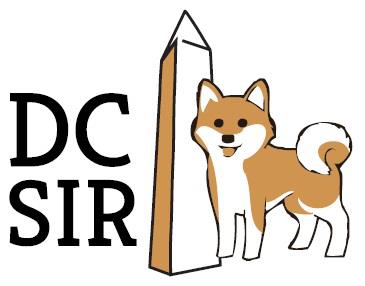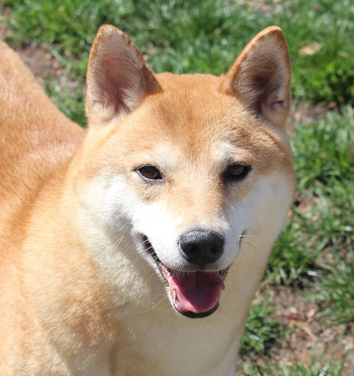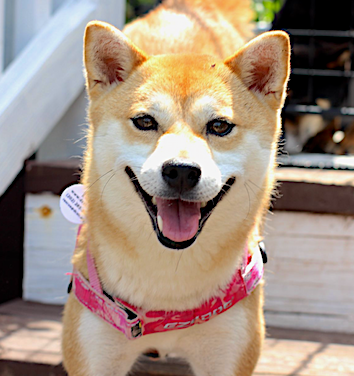About the Shiba Inu
A Shiba Inu is a small to medium-sized breed of dog that originated in Japan. It is one of the oldest and smallest native Japanese dog breeds. Shiba Inus are known for their unique look; with a curled tail, fox-like face, and a thick double coat. They are alert, agile, and have a spirited personality.
The Shiba Inu was originally bred for hunting small game in the mountainous regions of Japan. Shibas are independent, highly intelligent, and clean. Shiba Inus are often described as loyal and good-natured, but they can also be somewhat reserved, especially with strangers.
Did you know? In a study that tested the DNA of dogs around the world, that the Shiba Inu has the closest characteristics to the wolf? This means they haven’t been tinkered with as much as other breeds. Read more about this here: https://www.kodawarikennel.com/…/shiba-inu-the-most…
Like all dogs, the Shiba Inu require consistent training and socialization from an early age to ensure they develop into well-behaved companions. Since the Shiba Inu isn’t bred to be a people pleaser, creating a strong bond through positive associations with training will benefit everyone. Due to their charming appearance and unique personality traits, Shiba Inus have gained popularity as pets around the world.
They are adaptable when it comes to their living conditions. Since they are from Japan, where many people live in high-rise apartment buildings, they can live in somewhat small quarters. But remember, they still need exercise, so make sure to take them out frequently.
Thinking of Adopting a Shiba Inu?
Adopting a Shiba Inu can be a wonderful experience, but it’s important to understand their unique characteristics and needs. Here are some key points to consider:
1. Temperament:
- Shiba Inus are known for their spirited and independent nature. They are often described as “cat-like” because they are clean, groom themselves, and can be aloof.
- They are generally loyal to their owners but may be reserved around strangers. Early socialization is crucial to help them become well-rounded and comfortable in different situations.
2. Exercise Requirements:
- Shiba Inus are an active and agile breed. Regular exercise is essential to keep them physically and mentally stimulated.
- They enjoy activities such as walking, jogging, and interactive play. Off-leash areas should be secure, as Shiba Inus may have a strong prey drive.
3. Grooming:
- Shiba Inus have a thick double coat that sheds heavily, especially during seasonal changes. Regular brushing is necessary to manage shedding and keep their coat healthy.
- They are generally clean dogs and may groom themselves like cats.
4. Training:
- Shiba Inus are highly intelligent. Consistent and positive reinforcement-based training is important.
- Early socialization and training are crucial to prevent behavioral issues. They may have a strong prey drive, so training on recall is essential.
5. Independence:
- Shiba Inus can be strong-willed and independent. This is often mistaken for “stubbornness” but any reputable trainer will identify the handler’s inability to properly motivate and communicate the desired behavior. Since the Shiba Inu wasn’t bred to be a people pleaser, we must take the time to identify their motivators, triggers, and with a strong bond, engage the Shiba’s intellect to modify behavior. They may not always listen, especially if we don’t know the fundamentals of modifying behavior.
- Patience and positive reinforcement are key when training a Shiba Inu. Harsh training methods can result in immediate behavior change but the long-term damage to building the necessary bond with a Shiba and the fall-out behaviors from aversive training can and do often lead to surrenders.
6. Health Considerations:
- Shiba Inus are considered a ‘sturdy’ breed with few genetic disorders that plague many of the pure bred. Again, this goes back to the least amount of tinkering and the Shiba Inu being closest to the Wolf study above. Some of the noted issues that can be exasperated through environment are Glaucoma, Luxating Patella, Allergies and Thyroid issues. Many of these issues can be prevented with diet and environmental considerations. For example, walking a Shiba Inu on a collar can exasperate interocular eye pressure creating early onset of glaucoma in predisposed dogs:
- Collars vs Harness
7. Escape Artists:
Shiba Inus are known for their ability to escape from enclosures. Ensure that your yard is securely fenced and keep an eye on them during outdoor activities. Unfortunately, a large number of Shibas come into rescue because they were run away. While it is more difficult to train a Shiba Inu off leash, it can be done but not without a strong bond and implementation of incremental reward-based training.
8. Socialization:
Early socialization is crucial to prevent Shiba Inus from becoming overly aggressive or fearful. Expose them to various people, environments, and situations from a young age. We always stress the difference between socialization and exposure. Throwing a fearful puppy in new scary environments without building a bond, having the ability to read body language to know when your puppy is stressed and without incremental confidence building can lead to more issues. See real life example of taking the time to socialize vs exposure here.
Remember that every dog is an individual, and there may be variations in behavior even within the same breed. Understanding and meeting the needs of your Shiba Inu will contribute to a happy and fulfilling relationship.


